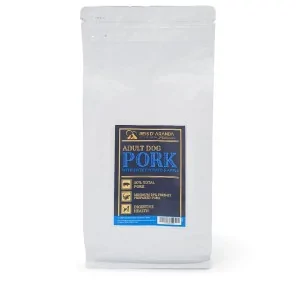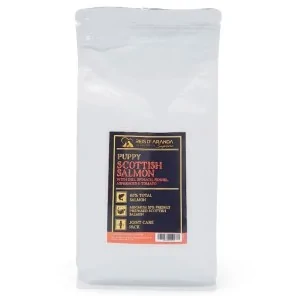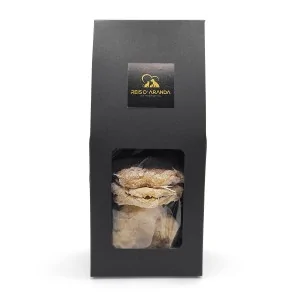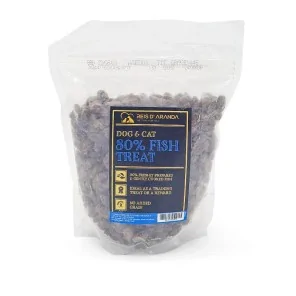The Tornjak originated from genetically homogeneous, almost extinct, indigenous shepherd dogs. These dogs have...
THE POMERANIA
INTRODUCTION
The Pomeranian is one of the best known and most striking of the small dog breeds, their bear-like appearance and sociable, active and playful personality have made them the companions of aristocrats, movie stars and families all over the world, but what is it like?
THE ORIGIN OF THE POMERANIAN
Curiously, the Pomeranian is known to all as one of the smallest miniature dogs in existence. However, in its origins, it was a larger dog. Proof of this can be seen in the pictures from centuries ago, where they appear next to their owners, with a considerable size.
200 years ago, this breed of dog could weigh up to 22kg, whereas nowadays they usually weigh no more than 3kg. They were bred to reduce their size. The Pomeranian of Queen Victoria of England (a great dog lover), weighed 6kg.
The Pomeranian is descended from the Spitz family, a working dog of European origin, almost identical in appearance to today's Pomeranian, only much larger. The first specimens date back to the 18th century, with the aim of controlling the herds and gathering the reindeer.
With the arrival of the 20th century, the Pomeranian became more like the dog we know today. But let's not get too far ahead of ourselves just yet. The origin of the Pomeranian lies between Poland and Germany, in the region of the same name.
It became known there, but quickly gained spectacular fame in the United Kingdom. Queen Charlotte, the German wife (perhaps because of her origins she was so interested in the breed) of King George III, took a pair of Pomeranians to the UK in 1767.
The Pomeranian was officially recognised as a ‘Spitz’ dog in 1870 at the famous Kennel Club of England. The breed became well known to the British when Queen Victoria got hold of several dogs. She became so enamoured of the breed that she had a kennel with the Windsor affix.
Interest in the breed in Britain grew in an unthinkable way. It was largely thanks to Queen Victoria, but also to personalities such as Mr. Gladstone, who was captivated by this dog, and owned a black Pomeranian.
In the American country of the United States, the first Pomeranian registered with the American Kennel Club was Dick, in 1888. Before the end of the 19th century, in 1900, the first Best of Breed award was given to a captivating brown Pomeranian named Nubian Rebel.
In 1909, the American Pomeranian Club was accepted as a canine society of the American Kennel Club. Relatively recently, in 1996, Rumm Tumm Tiger was awarded the title of National Champion. His uniqueness is that he was the first brindle to be awarded this title.
WHAT IS THE POMERANIAN LIKE?
The following is the standard of the Pomeranian within the framework of the FCI, which is very clear as to what a Pomeranian should look like:
GENERAL APPEARANCE: The Spitz is attractive because of the beauty of its coat swollen by a rich undercoat. Particularly striking are the neck with its opulent mane-like ruff and the bushy tail carried proudly on the back. The head with bright, fox-like eyes and the small, pointed ears close together give the Spitz its characteristic bold appearance.
HEAD : Of medium size and seen from above wedge-shaped, the stop is well marked but not abrupt, the muzzle is rather short and balanced with the head (ratio 2:4), the nose is small and rounded, pure black (brown is permitted in chocolate specimens) as are the lips.
The cheeks are rounded and never prominent.
TEETH : Normally developed, the jaws have a complete scissor bite consisting of 42 teeth according to the dog's dental formula. The upper incisors cover the lower incisors in close contact, the teeth are set square to the jaws. Powerful, the canines (canines) fit perfectly. In the Miniature Spitz/Pomeranian a moderate absence of premolars is acceptable. A pincer joint is tolerated.
EYES: Medium size, slightly almond-shaped and dark in colour.
EARS: The small ears of the Spitz are high set, relatively close together, triangular and pointed; always carried erect with a very stiff tip.
NECK: Of medium length, the neck, broad at the insertion between the shoulders, has a slightly curved nape. Without dewlap, it is covered with a collar in the form of a mane.
BODY: The back is short and horizontal, gently curved and very firm, the loin is broad and powerful. The chest is deep and rounded, and the ribcage is as well developed as possible.
TAIL : Set on high and of medium length, the tail, very bushy, is erect from the root, bent forward and curled over the back, on which it rests firmly. A double curl at the end of the tail is acceptable.
FOREQUARTERS: Straight and fairly broad in front with powerful bone. The shoulder is well muscled and firmly attached to the rib cage. The shoulder blade is long and oblique towards the rear; the upper arm is approximately the same length as the shoulder blade, forming an angle of approximately 90° with the latter, with the elbows close to the body (never outwards or inwards). the hands should be as small as possible, round and tight. Nails and pads should be as dark as possible.
HINDQUARTERS: The hindquarters are well muscled and well breeched to the hocks. The hindquarters are straight and parallel. The thigh and lower thigh are approximately equal in length.
The knee joint is only moderately angulated; it is solid and, during movement, does not move inwards or outwards; the hock is perpendicular to the ground. The feet are as small as possible, round, with arched toes close together, called cat feet; the pads are durable. The colour of nails and pads is as dark as possible.
GAIT / MOVEMENT : Thanks to a good drive, the movement of the Miniature German Spitz/Pomeranian is smooth and springy.
SKIN: The skin adheres well to the body and does not form folds.
COAT QUALITY: The Miniature German Spitz/Pomeranian has a double coat: a long, smooth, spreading top coat and a firm, short, thick and padded undercoat. The head, ears, front surfaces of the front and hind legs and feet have short, dense (velvety) hair; the rest of the body has long, abundant hair. Neither wavy, nor curly, nor shaggy, it does not form a part on the back. The neck and shoulders are covered with a rich mane. The back surfaces of the forelegs are well fringed, the hind legs have opulent breeches from the croup to the hock and the tail is bushy. The shape of the hair is not visible.
COLOUR : White, black, brown, brown, orange, grey shaded and other colours are permissible.
- WHITE: The coat should be pure white, yellowish tones often visible in the ears are tolerated.
- BLACK: For the coat of the Black Spitz, the undercoat and the skin should also be dark in colour. On the surface the colour is a black lacquer without streaks or patches of white or any other colour.
- BROWN : The coat of the Brown Spitz should be dark brown, uniform and evenly distributed.
- ORANGE : The coat of the Orange Spitz should be evenly distributed and of a medium shade. White shades (and no spots!!!!) on chest, legs and tip of tail are tolerated.
- WOLF GRAY (SHADOW GRAY): Wolf Grey is a silvery charcoal grey (with black at the tips of the hair). The muzzle and ears are dark. Around the eyes there is a clearly marked ‘spectacle arm’ design, formed by a delicately drawn black line running diagonally from the outer corner of the eye to the lower attachment point of the ear, associated with clean shading and shaded gradations forming short, expressive, short, expressive lines. Eyebrows. The area of the mane and shoulders is lighter. The forelegs and hindquarters are silver-grey with no black patches below the elbows and knees, except for light stripes on the toes. The tip of the tail is black. The underside of the tail and the breeches are light silver-grey.
- OTHER COLOURS : Under this name ‘other colours’ are included coats of all other shades: cream, cream sable, orange sable, black and tan, variegated. Mottled (or particoloured) dogs should have a white background and should have black, brown, grey or orange patches distributed all over the body.
HEIGHT AND WEIGHT : Height should be 21 cm at withers with a tolerance of ± 3 cm, weight should always be in accordance with the size of the dog.
BEHAVIOUR / TEMPERAMENT : The Miniature Spitz/Pomeranian is always attentive, lively and extraordinarily attached to his master. He is very responsive and easy to train. His pleasant and cheerful character makes him an ideal companion and family dog and a guardian of the house and flat. He is neither fearful nor aggressive. Weather resistance, hardiness and longevity are other distinguishing qualities.
Any departure from the foregoing should be considered a fault which should be penalised according to its seriousness and its effect on the health and welfare of the dog.
SERIOUS DEFECTS:
- Defects of construction.
- Head too flat.
- Apple-shaped head.
- Nose, eyelids and lips (bark) flesh coloured.
- Faulty teeth, absence of teeth.
- Eyes too large or too light.
- Prominent eyes.
- Absence of the characteristic facial pattern of the wolf grey Spitz.
- Faulty gait.
DEFECTS LEADING TO EXCLUSION:
- Aggressive dog or fearful dog.
- Any dog with obvious physical or behavioural abnormalities.
- Persistent fontanel.
- Overshot or undershot bite, cross bite.
- Entropion or ectropion.
- Partially erect ears.
- Small white spots or markings clearly visible (e.g. ‘Socks’).
- Colour variations not listed.
- Males should have two apparently normal testicles fully descended into the scrotum.
- Only healthy dogs, capable of performing the functions for which they were selected and whose morphology is typical of the breed, may be used for breeding.
In terms of health and life expectancy, the Pomeranian has an average life expectancy of 12 to 14 years, the most common diseases being the following:
- TRACHEAL COLLAPSE: This is a narrowing of the tracheal lumen which prevents the correct passage of air during breathing. Due to this collapse, the animal shows signs of asphyxia and/or severe coughing, requiring a consultation in an emergency department.
This pathology is due to the degeneration of the structures that make up the trachea (cartilaginous rings), which will cause them to weaken and produce this flattening of the tracheal lumen.
The narrowing can affect the cervical area of the trachea (the part of the neck), the intrathoracic area (the part of the trachea that runs inside the thorax) or both.
If the affected area is the cervical area, the signs presented by the animal are usually more evident on inspiration; whereas, if the thoracic area is affected, they are usually more noticeable on expiration.
Also, according to the diameter of the lumen of the affected section, a grading can be made to assess the severity of the pathology (I-V):
Grade I: those cases with a decrease in diameter of 25%.
Grade V: the lumen is reduced by up to 90%, with all the risks that this entails.
- Patella luxation: This is a pathology characterised by a misalignment of the limb, deformations occurring during the development of the animal, which cause the patella to move out of place. It may be due to a congenital disease or, in some cases, caused by trauma.
- DEGENERATIVE MYELOPATHY (DM): Degenerative myelopathy in dogs is an abnormality that affects your pet's spinal cord, causing its mobility to progressively reduce. Although the exact cause is not known, specialists believe it is due to mutation of the SOD- gene.
This disease usually appears at the age of 4 years and worsens after the age of 8 years. As it is degenerative, the symptoms get progressively worse. It is characterised by a progressive paralysis of the dog's rear end, eventually also affecting the intestines and bladder. Although there are a number of distinguishing features, degenerative myelopathy in dogs could be compared to human ALS disease.
- ALOPECIA X: It is called alopecia X because the pathogenesis leading to hair loss is unknown. It is now considered to be a disorder of hair growth in which follicular dysplasia (non-hormonal) and an abnormal hair cycle (hormonal) are associated. This pathology has been given numerous names: pseudocushing, growth hormone-responsive dermatosis, hyposomatotropism, castration-responsive dermatosis, testosterone-responsive dermatosis, ovariohysterectomy-responsive dermatosis, castration-responsive dermatosis, adrenal hyperplasia type syndrome, adrenal sex hormone imbalance, mitotane-responsive alopecia, follicular dysplasia of Nordic breeds, pomeranian black skin disease. ..
It is not associated with systemic signs, the only symptomatology is hair loss with or without pigmentation of the affected area.
Many veterinarians use the term alopecia X to designate a symmetrical alopecia with characteristics very similar to endocrine alopecia after excluding hyperadrenocorticism and hypothyroidism, and support this diagnosis with the biopsy finding of a sign considered by some dermatohistopathologists as pathognomonic: the flaming follicle.
The breeds in which this condition has been described are Nordic breeds such as Alaska Malamute, Chow-chow, Pomeranian, American Eskimo, Siberian Husky, Keeshond, Samoyed and also Poodle. Some cases have also been reported in mongrels of these breeds.
- LEGG-CALVE PERTHES SYNDROME: Legg-Calve Perthes disease (avascular necrosis of the femoral head) is a pathology affecting young dogs of small, toy and miniature breeds. It causes severe pain and marked lameness of the affected limb, with muscle atrophy due to lack of support and crepitus of the joint on manipulation. It can occur in one or both hips. And the onset of symptoms is usually sudden, although the loss of muscle mass occurs gradually and may go unnoticed at first.
It is caused by a lack of blood supply, which in turn causes degeneration and necrosis of the head and neck of the femur.
The diagnosis is made by hip X-ray and the treatment of choice is surgical. Specifically, it consists of excision (‘excision’) of the affected femoral head and neck.
The prognosis after the operation is favourable if a correct postoperative period is followed, and the patient can lead a completely normal life in the vast majority of cases.
DIFFERENCES BETWEEN POMERANIANS AND KLEINSPITZES
On more than one occasion we meet clients or acquaintances who claim to have a Pomeranian or who have bought / adopted a Pomeranian and, as soon as we see it, it is more than clear that there is a confusion or a deception on the part of the person who has given or sold it.
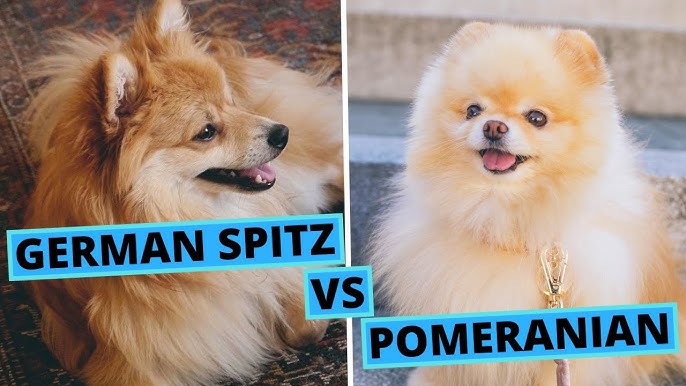
Bigger size, more pointed snout and ears, much straighter hair, although still long? Signs that what we have in our hands is not a Pomeranian, but the next size up within the German Spitz: the Kleinspitz.
German Spitz dogs (German Spitz) comprise five varieties which the Fédération Cynologique Internationale (FCI) groups under one standard, but with differences for each variety.
The varieties included in this group are:
- Wolf Spitz (KEESHOND)
- Large Spitz (GROSSPITZ)
- medium spitz (MITTLESPITZ)
- Small Spitz (KLEINSPITZ)
- Dwarf Spitz (toy) or Pomeranian Spitz (ZWERGSPITZ)
All these varieties are practically identical, except for the size and colour of the coat in some of them. Although the FCI groups them all together in one standard and considers them to be of German origin, the Keeshond and the Pomeranian are considered by other organisations as breeds with their own standards. According to other canine societies.
The Kleinspitz has a height at withers of 24-29.9cm compared to 18-23.9cm for the Pomeranian.
The German Spitz is a rather special breed for this subject, as sometimes in a litter of Dwarf Spitz, Small Spitz size puppies can be born, just as in a litter of Small Spitz, Dwarf Spitz size puppies can be born.
It is rarer for a litter of Dwarf or Small Spitz to give birth to Medium Spitz puppies, or for a litter of Medium Spitz to give birth to Dwarf or Small Spitz puppies, although this also happens.
For this reason the FCI allows to change the variety once the specimen is an adult, that is to say if we have a puppy which in its pedigree says that it belongs to the variety Zwergspitz-dwarf spitz, but as an adult it reaches a bigger size, we can change its variety to Kleinspitz-small spitz or mittlespitz-medium spitz, depending on its size, passing a previous recognition.
Even if permission is requested from the FCI before mating, crossbreeding between varieties is permitted.
We must also bear in mind that dogs brought from the USA or other countries such as Russia, Korea, etc. do not have the same standard as the FCI standard. That is to say, the standard here in Europe tells us to distinguish the German Spitz according to their height at the withers, however, in the United States for example, they are classified according to weight, that is to say, there a specimen of 3kg and 25cm is a Pomeranian, however one that weighs 4.5kg and measures 24cm would be a Kleinspitz (for example). So, even if dogs of 18-24cm are imported, if they have ancestors of larger size, their descendants can reach that size, which would not be relevant there and would be relevant here.
(Information from the kennel ALBAICÍ GALÁN - Spain)
THE POMERANIAN GROOMING
The natural and beautiful aspect of the Pomeranian's coat requires a constant maintenance work and a daily commitment from the owner, although it is not too difficult, it is enough to understand the moulting dynamics of our pet and follow the advice described below to have it always in an optimal, beautiful and healthy state.
When we incorporate a new member into the family, we have to invest time in teaching them habits (where to sleep, where to relieve themselves, when not to bark or jump...), trainers point out that the best way to teach dogs is through repetition and this daily teaching should also apply to hygiene: the more dedication we invest in these activities as puppies, the easier it will be to live with them as adults. Dogs that are used to brushing (the vast majority from ethical breeders) enjoy it and have a special connection with their owners during grooming sessions, it is relaxing for them and more than one falls asleep in the process. We must start when they are very young puppies and reward them continuously so that they relate it to something positive, if they react negatively we must scold them and continue, as stopping would become a victory for the dog and, in later grooming sessions, they would repeat the bad behaviour because they know that the human is afraid of them.
We will always spray our dog with the conditioning spray, always trying not to wet the coat excessively but dampening it before brushing, in this way the coat will be more elastic and will not break easily.
Brush with a soft metal-tipped brush in the direction of the coat and from the root, never just from above, as the knots will hide under the brushed coat.
Finally, use a metal-toothed comb to check that there are no knots left.
How often should we brush our Pomeranian? When they are puppies or are in the process of moulting we should do it three times a week and when they are adults with one day a week in an intense way will be fine, always using the moisturizing spray.
As far as bathing is concerned, this should be done monthly and we should always use a good quality moisturising shampoo and a moisturising mask to help prevent the coat from dehydrating during the hottest periods or when they are moulting.
We will never cut the hair beyond shaping it by removing the excess ends with scissors, cutting the hair with a machine (for example the ‘Boo cut’) is completely harmful and can cause what is known as ‘post clipping alopecia’.
Finally, we must never forget to provide our Pomeranian with a quality food, fish-based feeds are a great option as the omega 3 will help him to have a healthier and more beautiful coat.
CONCLUSION
The Pomeranian is a beautiful, cheerful and eye-catching dog that requires frequent care from its owner. If the owner is committed to providing it with care in every way, the next 12 to 14 years of its life can be the best, as the happiness of the dog is the happiness of the owner.
Leave a comment
Log in to post comments

